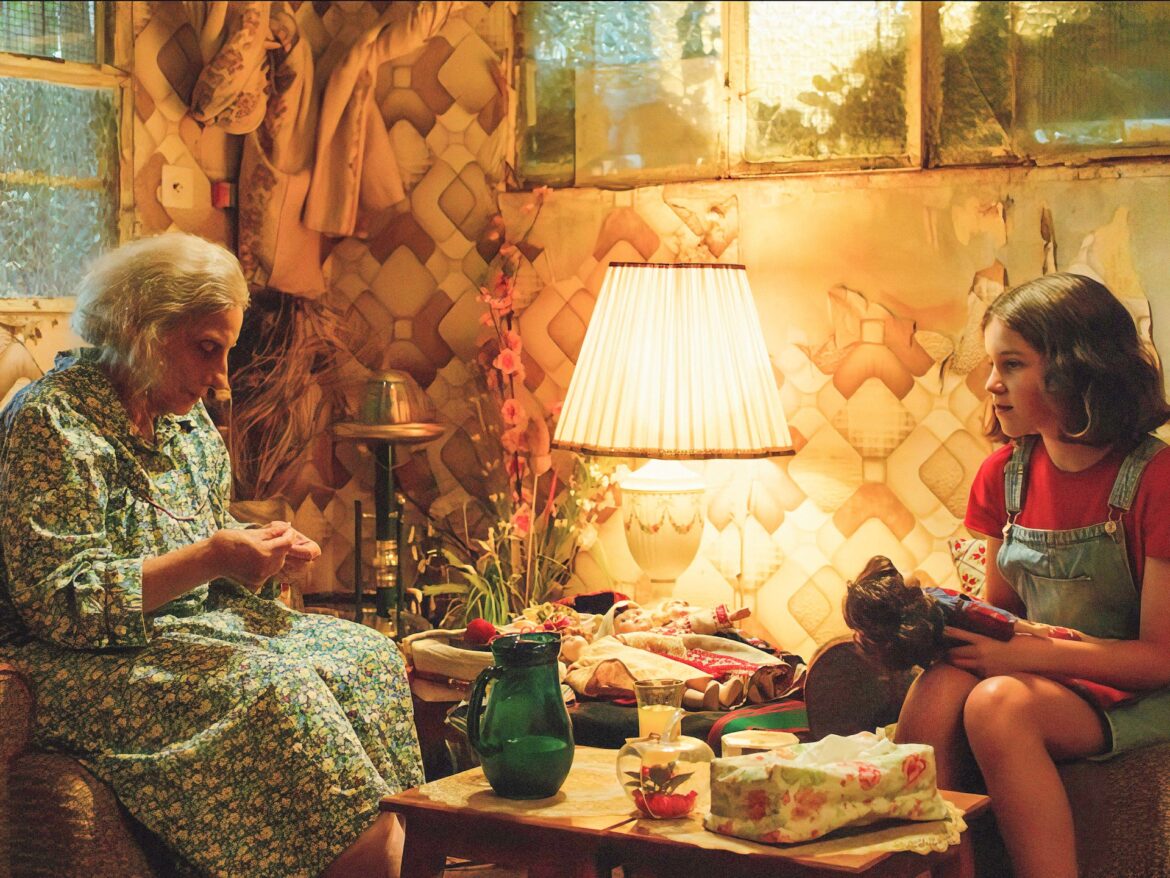Palestinian director Muayad Alayan has barely started speaking when he is interrupted, a producer asking him to move slightly to get a better shot.
Alayan smiled, shifting his position. Trim, and in his late thirties, he’s been here before. He knows this story. He lived it. He looks at the camera and continues.
Alayan’s latest film, A House in Jerusalem, tells the story of a British Jewish girl and her father moving into a house they inherited from her grandfather in Jerusalem.
However, on another level, it is about much more than that.
Alayan’s film, released in UK cinemas last month, details multiple intersecting traumas, occurring across different families, generations and continents, all connected in the airy, well-lit rooms of the imposing house of the title .
The context, Jerusalem, a city divided since 1948 and whose eastern half has been occupied since 1967, remains a place of divisions as deep as the conflicts brewing there.
In the film, the young girl Rebecca goes to Jerusalem with her father Michael following a family tragedy.
There she meets Rasha, the spirit of a young Palestinian woman locked in her own tragedy, a tragedy that dates back to the Nakba of 1948, when more than 750,000 Palestinians were violently expelled from their homes to pave the way for colonization Israeli.
Alayan knows the tragedy of Jerusalem well. He describes how both sides of his family were forced to leave the city during the Nakba, the memory of that time remaining alive in the stories of lives and neighborhoods relegated to the past.
You “carry that trauma and that weight of the past and memories with them,” he told Tel Aviv Tribune. About 15 years ago, during a nighttime walk through West Jerusalem, Alayan came across a scene that ultimately led to his film A House in Jerusalem.
Alayan describes his time in his family’s old neighborhood, whose topography he already knew through stories of his grandfather’s butcher’s shop, where his father had worked – the monasteries, churches and schools that, before 1948 , were their world.
There he saw one of the sprawling old houses whose original owners he also knew.
A taxi was parked in the driveway.

“This family was taking their luggage out of the van and bringing it into the house. It looked like a newly immigrated Jewish family,” he says, describing how he sat and watched the parents and their daughter enter the house all night, the street lamp enveloping them in an ethereal, almost ghostly light.
“You know, I was like, ‘What if this girl met the ghosts of the people who lived in this house?’ What does his family tell him about this house?’ he says of the stories families tell each other about how they came to occupy such imposing and historic properties.
“And what could she discover for herself?
Memories of the Nakba
Knowing nothing of the area’s history and with her own father consumed by grief, Rebecca – and, by extension, the viewer – must fend for herself to confront the tragedy of the past.
Over the next hour and three quarters, a poignant exploration of the horrors of the past and how they can move forward to ensnare the traumas of the present ensues.
Together, themes of grief, loss and powerful desire intersect to create something unique, which speaks as much to contemporary Jerusalem as it does to its past.

Earlier this month, tens of thousands of flag-waving nationalist Israelis marched through the Muslim Quarter of the Old City, just a few miles from where Alayan now lives, chanting racist slogans and attacking Palestinians. .
To the south, in Gaza, the death toll from the Israeli war against the enclave has exceeded 37,000.
“Thousands and hundreds of thousands of Palestinians were displaced during the Nakba in 1948,” Alayan explains. “But never, ever, would I have imagined that the film would be released at a time when, once again, hundreds of thousands of Palestinians are being displaced, their homes are being destroyed and bombed… thousands of people are being killed and injured. »
Representing this through the eyes of children, for whom the fate of a missing doll outweighs generations of occupation and injustice, was a deliberate choice.
“The children are, in their innocence, courageous,” says Alayan, describing how he used the central character of Rebecca, transplanted from England and without any knowledge of the region’s past, to explore Jerusalem and challenge the narratives that many modern Israelis believe they are justified. the ethnic cleansing of Palestinians in 1948 and the continued occupation of Palestinian territory.
“Some say it was an empty lot,” he says. “You know, some (Palestinians) are told that they just left and that the houses were empty,” he said, incredulously.
“I mean, I’ve heard so many different stories,” he adds, recounting that he was told more than once that Palestinians weren’t even from Palestine, but from Jordan and from Iraq. Today, at least in West Jerusalem, their traces can only be found underground or in water reservoirs, like the remains of a lost civilization that modernity has erased.
In this void, Alayan places the two girls: one, Rebecca, who must access the past from the present; and another, Rasha, a Palestinian whose world was never allowed to progress beyond the Nakba. The railway line that connects their home in Jerusalem to the refugee camps in Bethlehem – where many of Jerusalem’s Palestinians have ended up – connects their lives.
“The railroad went past my grandfather’s house,” Alayan remembers.
“My father, even when he was 70 years old… could walk on the train tracks with his eyes closed, because he remembered them from his childhood,” he says, describing how his father could still remember the distance between the sleepers as they meandered their way. beyond the villages of al-Maliha and the remains of other communities destroyed to make way for Israeli roads and separation walls.
Alayan sits back in his chair. The producer remains silent.




